Part of the joy of travelling for The Jetset Boyz is getting to try new food and regional specialities. Of course, in Valencia, THE local specialty that you must try is paella (which, for those who don’t speak Spanish, is pronounced “pie-ay-ya”). The dish originates in the Valencia region and Valencians are very passionate about it. They are particularly vocal about what should be in it and how it should be cooked (especially if you are going to call it Paella Valenciana).
Before getting to Valencia I had already done some reading about the history of paella and found out that you could do paella making classes in the city. After a bit of research and lot of back-and forth between the two of us we chose the Escuela de Arroces y Paellas (School of Rice Dishes and Paellas), located in the Carmen Barrio of the old town. Booking was easy(ish) as you can do it online. Online bookings can be made on the VLC Valencia website (available in 5 languages) or via the escuala website (in Spanish and english only). We went through the school’s website, which uses the El Tenador booking tool which is a slightly better experience. We paid €55 each for the session, which included the cost of the ingredients and all food and drink.
The paella class starts when!!!
It must be said that Jetset Bart is not really a morning person! So, when I suggested doing the paella class and told him it started at 10:00 he nearly went in to shock. There is of course another session at 18:00, but I wasn’t going to tell him that; the morning session has a feature that is missing from the evening one and I wanted to experience the full works.
We turned up at the escuela just before 10 to find a group of our classmates waiting outside. The class was made up of a few couples and a group of 8 Dutch women. After a few minutes, we were met by Maria, our host and interpreter for the day. Maria took us inside and explained the plan of action for the session.
The class could be split into five parts:
- Shopping
- Cooking
- Drinking wine whilst the stock cooks
- Finishing off the cooking
- Eating the paella and drinking more wine
So that was the class in a nutshell. After Maria had outlined what we were going to do, it was time to ¡vamos! and do the shopping.
Shopping and history at Mercado Central
It is one of the world’s largest covered markets. The current market building was opened in 1924. It was a cutting-edge design for the time and the market is still innovative – Mercado Central was the first market in the world to offer online shopping and home delivery. The tour of the market and a guide to its history are part of the morning paella class, but as the market closes at 3:00 pm it doesn’t feature in the evening class.
We head first to the butcher’s stall, where Maria explains about the meat in a true Valencian paella. Originally, it was made with rabbit and later with a mixture of rabbit and chicken. Actually, the rabbit and chicken combo is considered the only choice for authentic Paella Valenciana. Yep, those of you that believe that paella is a seafood dish, think again (and definitely don’t mention chorizo to a Spanish person in the same sentence as paella unless you want to be ranted at).
After buying the meat it was time to stock up on the beans (4 different types), the saffron (only the finest “coupé” grade) and paprika (sweet and smoked is best). Stocked up with all our ingredients we headed back to the escuela for a quick coffee before getting into the kitchen and getting stuck into the main event; cooking Paella Valenciana.
First heat your paella…
We were split into our couples and the Dutch women (who were starting to become a bit annoying by this time) were divided into two groups of four. As we entered the kitchen we were greeted by our paella master chef, the lovely Sonja, who welcomed us to the kitchen and showed us to our workstations.
The workstations consisted of a paella cooker and a very large paella. Now here’s where the word paella gets a little confusing. A paella is a large shallow flat pan with (at least) two handles which is the ONLY acceptable pan in which to make the rice dish known as paella. Any Spanish person will tell you that if it isn’t cooked in a paella, it isn’t paella.
Resplendent in our Escuela de Arroces y Paellas aprons and chef’s hats (which we got to keep), we stood at our workstation as Chef Sonja ran through the ingredients with us in very rapid Spanish. Fortunately for most of the group, Maria was on hand to translate. From this point on the cooking began in earnest and the Dutch women became more irritating.
We fried our meat and prepared the beans, accompanied by helpful commentary by Sonja and rapidly translated by Maria as she leapt around the kitchen assisting each of us at our cooking stations. Things moved quite quickly at this point and you really had to pay attention to what you were being told and what was happening in your paella. For some reason the Dutch women seemed to prefer joking amongst themselves and going outside to smoke.
After the burst of energy of the frying, things calmed down as we turned down the heat and started on making the stock. Sonja, via Maria, gave the class a lesson in how saffron is grown and why it is so expensive to buy; To produce 1kg of the spice you need around 150,000 crocuses and a lot of back-breaking manual labour hours.
A watched paella never boils
With our stock on to simmer, Sonja gave us a tough choice – 1. stand and watch our paellas simmering or 2. sit down, have a little nibble and drink wine. For some reason, we all went for option 2 and we were soon sat around the table enjoying a nice glass of wine, along with some tortilla de patatas and some mussels. 45 minutes flew buy and we headed back to the kitchen for the final part of the paella cooking.
Once we were back at our work stations, we were told to taste our stock and add more salt is need Sonja made her way around the kitchen and tasted everyone’s stock. Faces were pulled, smiles were given along with instructions to add more salt for most people. Arriving at our pan, we were pleased to get a big smile and a “bueno”. The last ingredient to be added was the rice, a process that required a steady hand. Once the rice was in the paella, it was time to give it a final stir to mix the rice and then distribute the meat evenly.
After that, the contents of the pan must not be disturbed until the paella is eaten. For the 15 or so minutes it took for the rice to cook we were given some more history of paella and information about the traditional way of making it over a wood fire. We were also taught the paella chant and the paella dance. (We are convinced that the school has made those two up though).
Once the rice was cooked, we reached the climax of the cooking experience; creating the socarrat. This was possibly the most anxiety producing part of the session. Socarrat is a crust of lightly charred rice on the bottom of the paella and has a fantastically intense flavour; many Spanish people will tell you it is the best part of the dish. Creating the socarrat takes a fair bit of nerve and a good sense of smell. It involves turning your paella burner up to full blast and getting your nose close to the pan to detect the first smell of charring. There are only a few seconds separating socarrat from charcoal.
And we were nearly ready to eat. We allowed the paella to rest for a few minutes before posing for photos with the finished product. This was also a test of the paella’s quality; if it slides down pan as you tip it, it isn’t the right consistency. Fortunately, our paella showed no signs of trying to escape and we got another thumbs up from Sonja.
The proof of the paella is in the eating
After all the work that went into the cooking, it was great to finally sit down and try the fruits of our labour. To us it tasted pretty good and we tucked in to it and enjoyed the accompanying wine. Of course, it was one thing for us to like it, but how would our Paella Master rate it? Sonja and Maria made their way around the table sampling everyone’s fare.
She started with the two paellas that the Dutch women had made they got a non-committal “nice” with some comments about seasoning. The couple sat next to us got a more enthusiastic “nice” and were told it had turned out better than they had expected from watching them making it.
Finally, it was our turn. Sonja took a mouthful and silence followed. Then she took a second mouthful and declared “perfecto”. She went on to tell us (in Spanish) that it was exactly the right taste and texture, we had a good socarrat and the seasoning had the perfect amount of saltiness. Maria then shouted out “Everyone must taste this paella, this is how a proper Paella Valenciana should taste’. I think I now know how Great British Bake Off constants feel when they get a “Hollywood Handshake“.
And now the end is near
When we had had enough of eating paella, people started to drift off. The Dutch women were the first to head for the door, with moans about Sonja and Maria constantly telling them what to do. Our response to these was simply this. If you want to lark about, don’t choose to do something that is billed as a lesson and involves cooking. After all, your chicken isn’t going to stop cooking because you want to mess around and go for (yet another) cigarette break.
As for the rest of us, I think we all had a great time. It was a day that was both educational and lots of fun. Five and a half hours after we started, Jetset Bart and I left clutching our certificates and souvenir wooden spoons. We were also filled with a deep sense of satisfaction that we had produced a great paella. The the whole experience had definitely been money well spent. We wandered back to our apartment feeling slightly stuffed, but happy we had done it. Jetset Bart admitted that he had had some reservations about doing the lesson, but those quickly vanished as we got into the class.
It was a fantastic way to spend half a day and an experience that really is specific to Valencia. The time spent at La Escuela de Arroces y Paellas is one of best memories of our Valencia trip. If you’re visiting Valencia, I’d recommend finding the time in your schedule to take a paella making class; it is an experience that will give you a true flavour of the Valencian culture.

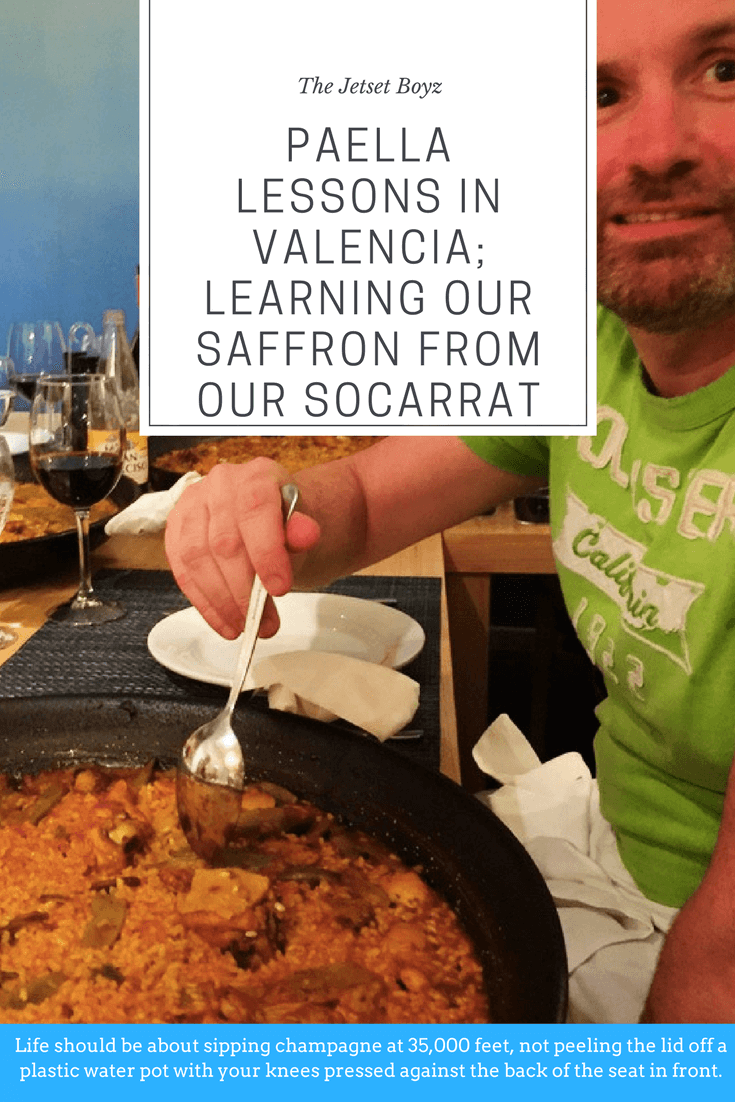
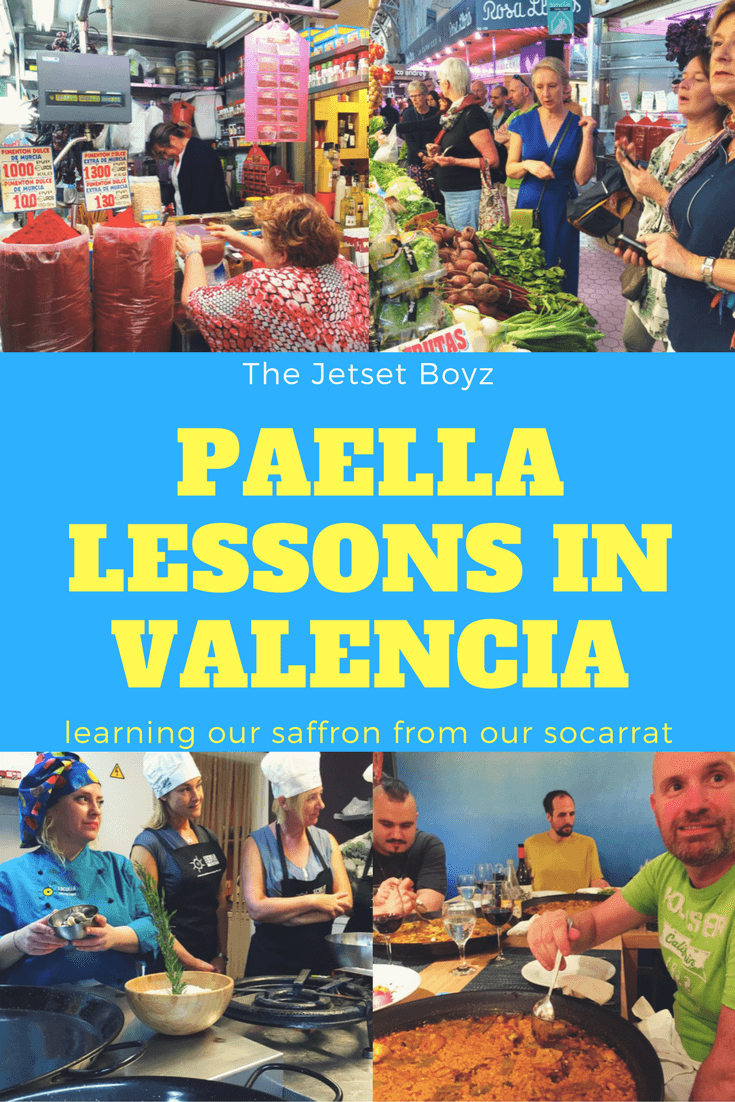
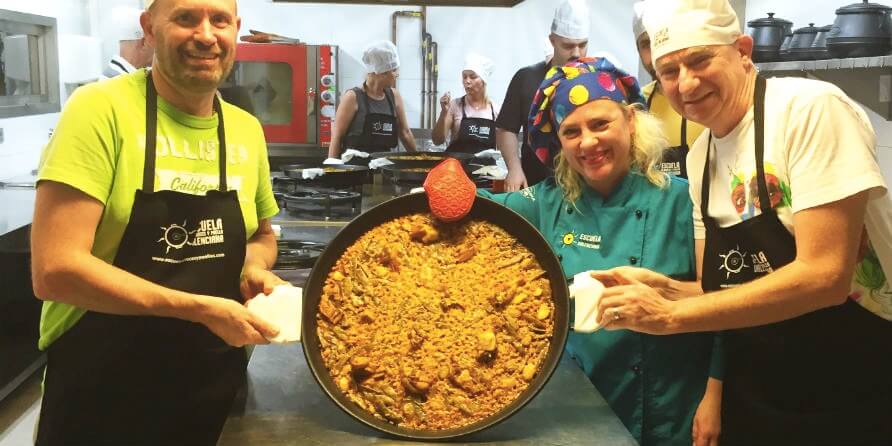
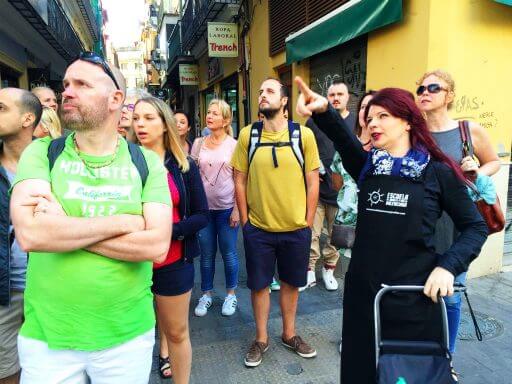
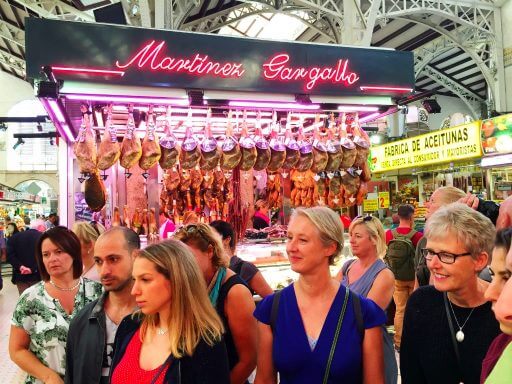
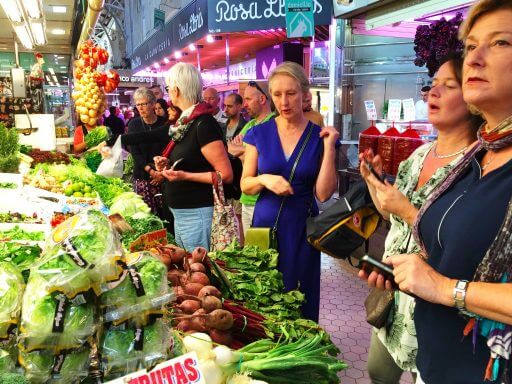
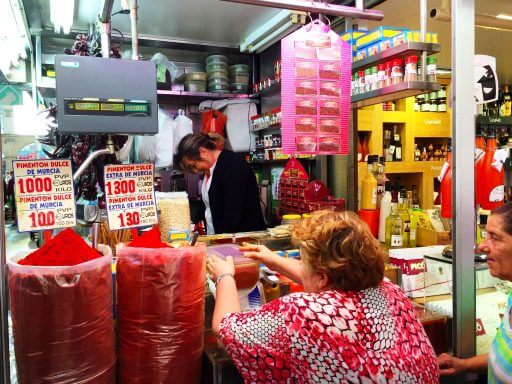

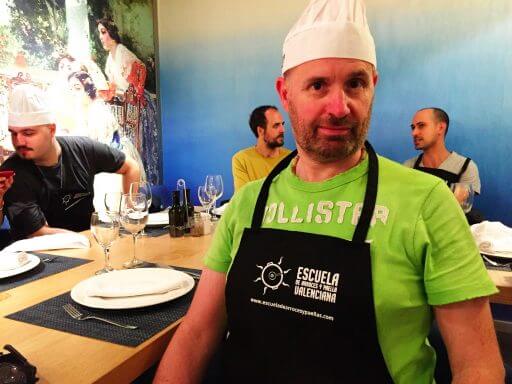

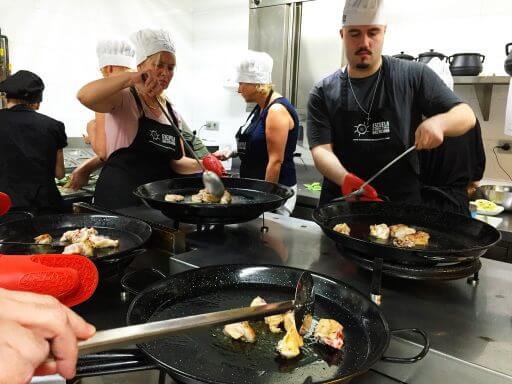
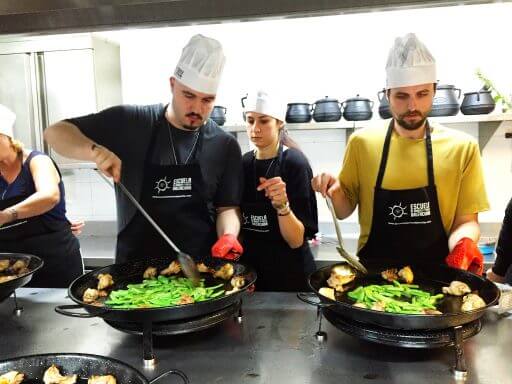
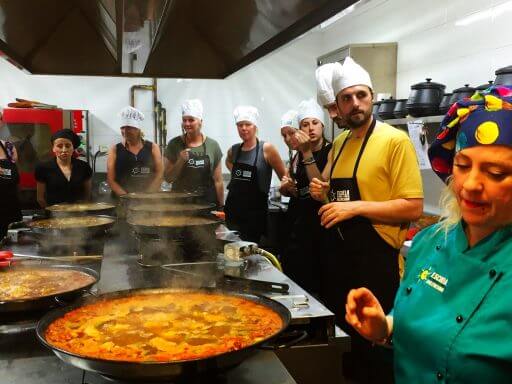
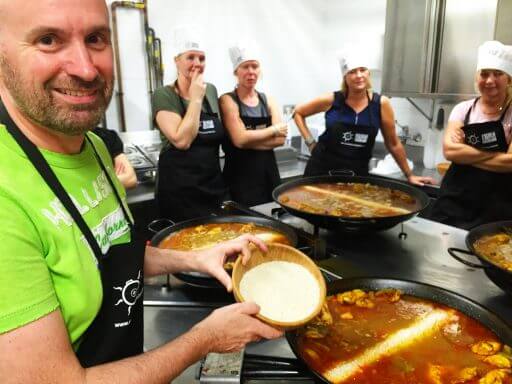

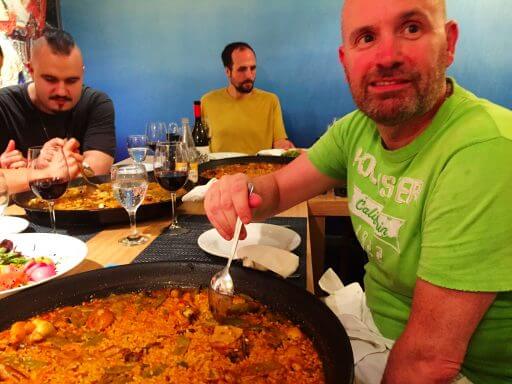
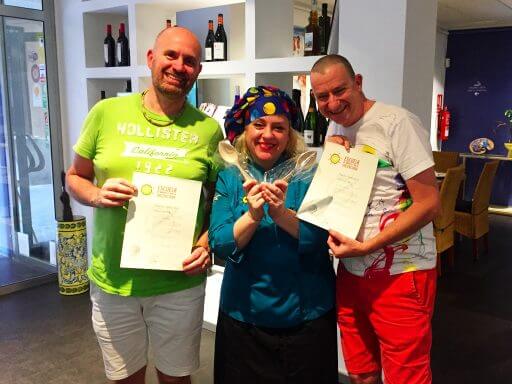
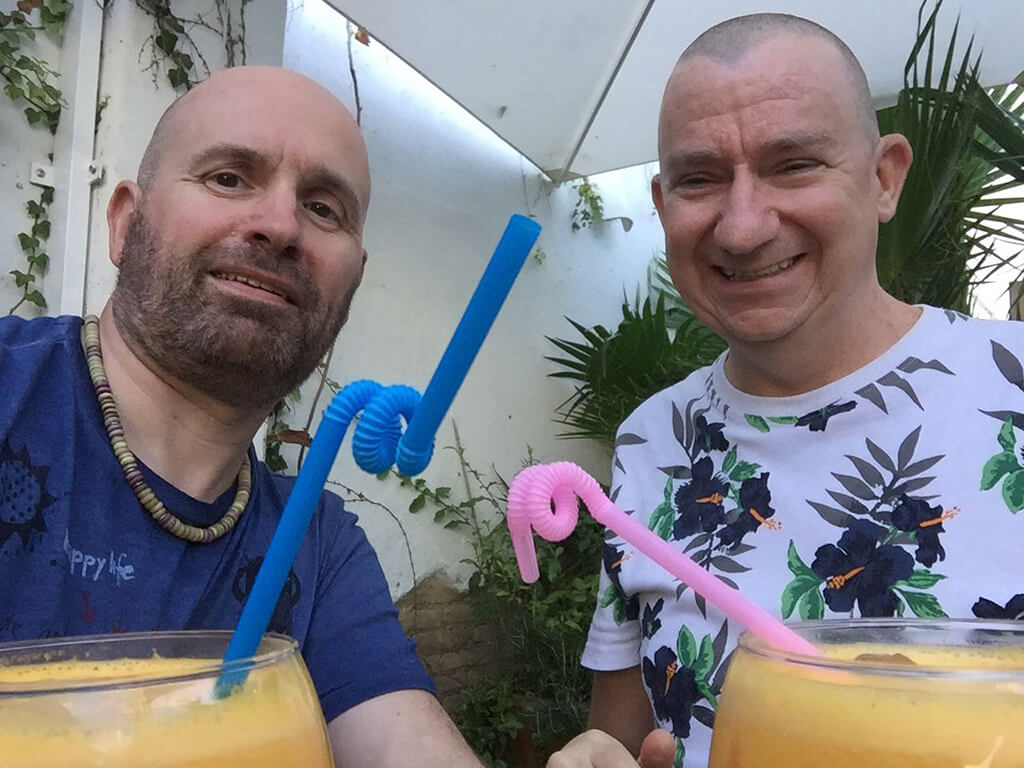

This sounds like a fabulous experience! I will be visiting Valencia again in September and I can’t wait to do something like this. I’ve always wanted to learn how to cook proper Valencia Paella and this just sounds like the perfect place to do it. Thanks for sharing! 🙂
I’m sure you’ll enjoy doing it. It was so much fun that I’d even be tempted to do it again next time we visit Valencia. Doing the tour of El Mercado Central was a real bonus. We found out so many interesting things about the history and design that we wouldn’t have picked up otherwise. Enjoy your lesson when you do it.
Sounds like a fabulous day! I love cooking classes which include shopping as part of the experience. Visiting markets is something I try to incorporate into every itinerary anyway, but it’s so much more immersive and authentic when you visit with a local, and know that the produce you’re purchasing is going into a local dish you’re going to be cooking that day. Very cool! Great opportunity to meet new people and make friends over a meal (and over wine as it cooks!) too. Congrats on the “perfecto” paella – what a fun day!
Thanks Megan. We had a great time doing the class and we’ve now been bitten by the cooking class bug. Markets are always a great way to get a feel for local culture and like you, we try to visit them everywhere we go.
I do love when we get to take a cooking class and learn a tasty local treat when we travel. We definitely would want learn more about Paella in Valencia. You can’t go wrong with a cooking class that includes both shopping in the local markets and drinking wine through the class! Great that you got top marks for your paella. Definitely something we will check out when we finally make it to Valencia.
Thanks Linda. The paella making class was the first cooking class we did. We had such a great time that now we try to fit in a cooking class whenever we visit a new place. It’s a fantastic way to learn about the local culture and you get to meet some interesting people and share some great conversations over food. Enjoy Valencia when you are able to get there.